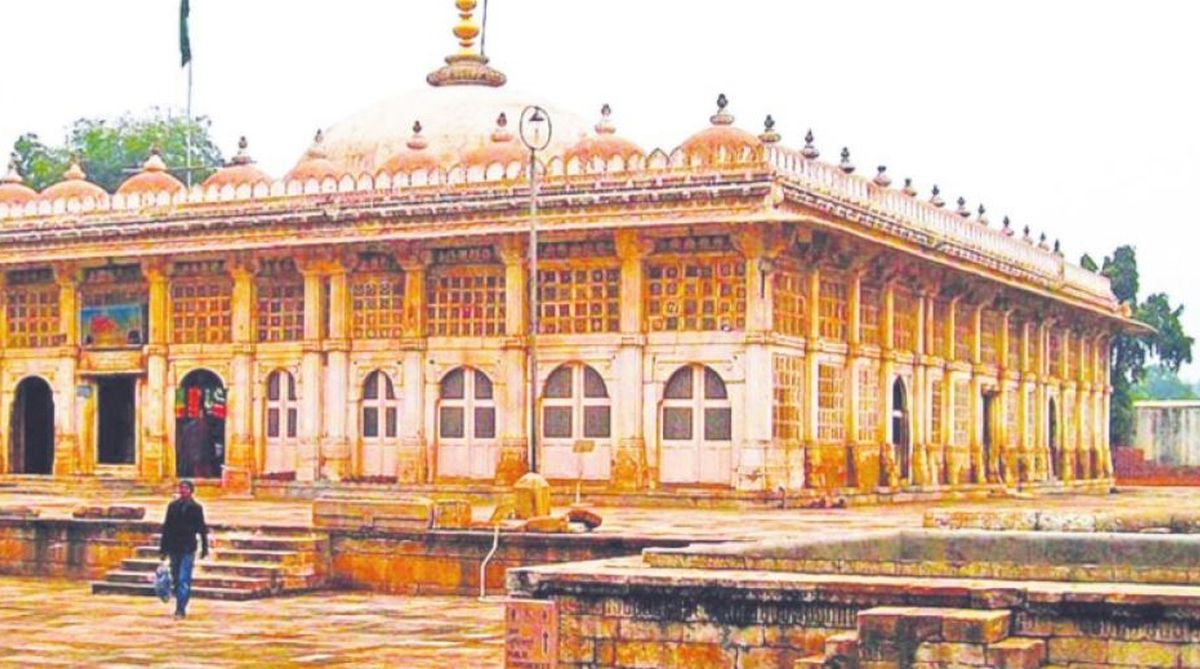Ahmedabad to host North East Trade and Investment road show
The Ministry of Development of North Eastern Region (MDoNER) will host the North East Trade and Investment roadshow in Ahmedabad on Friday.
At a seminar in ICCR, researchers recently presented papers which were interesting takes on the restoration of Indian heritage buildings.

The Centre for Built Environment, Kolkata, recently organised an international conference on urban conservation at ICCR. Paper sessions encapsulated historic cities, with the restoration of heritage and culture in an international perspective as well as the Indian panorama, and their planning and management; the rejuvenation of historic waterfronts; the cultural acupuncture in historic cities; urban design and cultural precincts in historic cities; urban conservation projects; connecting historic areas in cities; safeguarding and restoration of historic cities and areas from disasters and the conservation of modern architecture and cities.
Key participants and coordinators included Sonia Gupta, Kamalika Bose, Asmita Bhardwaj, Ananya Banerjee and Nilina Deblal while major presentations included those by Debashish Nayak and George Nicholson.
Advertisement
Nayak, in his speech, elaborated on “Ahmedabad: Getting the City back to its people”. Ahmedabad was declared a UNESCO World Heritage City last year. He mentioned that the walled city has many monuments and Hindu, Muslim and Jain havelis and palaces. Based on vastu principles, the city has about 600 pols or quiet neighbourhoods secluded from all clamour and rush.
Advertisement
The integrated construction of a ‘pol’, with its common structural walls between contiguous houses, makes it resistant to earthquakes. Shared community spaces and resources such as water and building structure, techniques and materials lead to social security and self-sufficiency to ‘pol’ inhabitants. Recently, the French government has taken an interest in the restoration of 300 havelis. Rapid urbanisation has detrimental effects to the heritage fabric of the city.
Luisa Dornellas from Portugal presented an interesting paper on the origins and historic usage of cobblestones in Portuguese cities like Lisbon. Nicholson discussed the trends and forms of regeneration and revitalisation of London waterfront while Manoj Datta spoke on urban redevelopment along the Tigris riverfront in Baghdad, Iraq.
Syeda Tahmina Tasmin and Humayra Alam presented their detailed research on local urban contexts and historic preservation of the European Club in Chittagong with a focus on nationalist associations with Pritilata Wodedar. Surojit Chakravorty gave a beautifully illustrated talk on the heritage of monasteries in the Spiti Valley and lamented how reckless treatment by tourists is spoiling the place.
Architects Chinnu S Kumar and Lakshmir Manohar made a spirited case for the urgent need to conserve St Joseph’s, Calicut, a 100-year old building in danger of demolition. Shreeja Ganguli spoke at length about the conservation of heritage in deltaic Bengal. Cherazade Nafa put forth an inventory to protect architectural and urban heritage in the Comoros Islands.
Stany Babu discussed identity and cultural cleansing in Berlin and other cities while Michael Levin spoke on modern urban development and planning in Tel Aviv, Israel. Poroma Banerjee gave a technical paper on heritage conservation and intellectual property rights. Shivashish Bose spoke on connecting buildings and courtyards in Pathuriaghata in the historic north Kolkata and Harshada Amol Punde presented a paper on railway heritage in Mumbai.
What are the major problems faced by urban conservation experts and authorities in India? Nayak, who is a pioneer urban conservator, feels that lack of awareness among citizens and authorities regarding proper preservation, lack of sufficient documentation and skilled people pose major obstacles.
Is there a dichotomy on whether or not to preserve colonial architecture? In response, Nayak mentioned that India has layers of history and colonial architecture that dates almost 300 years back. It is wrong to brand it unworthy of conservation. Kolkata and Chennai are the best sites of pure colonial architecture. The development of Indo- Saracenic styles is of particular interest.
What does he feel about the urban conservation scenario in Kolkata? Has there been increased awareness and improvement over the past 20 years? Nayak commented that his thesis on Dalhousie Square was a pioneer effort. INTACH was founded in 1984. He listed about 100 buildings worth preservation and started north and south Kolkata heritage walks in 1987.
The conservation movement in Kolkata needs to be more productive. He relocated to Ahmedabad in the 1980s, and feels that it is easier to implement urban heritage conservation programmes there because it is much smaller than Kolkata and, moreover, all conservation efforts are supported readily by the urban community.
According to Nicholson, an authority on the London riverfront, the Kolkata riverfront area has witnessed quite a lot of revitalisation. Metcalfe Hall has been excellently restored. The Millennium Park was a splendid initiative. Gentrification is not always worthy of criticism. The ownership of land should be sorted out in Kolkata. He mentioned the flower market which faces destruction should be conserved.
How does the city function as a spatial repository of culture, heritage and identity? David Harvey wrote in 2000 that the city is a space in the process of formation. Cities represent concentrations of buildings inscribed within urban spaces: concentrations of buildings, roads, flyovers, bridges and other spatial structures all acting as physical manifestations of power, culture, heritage and identity, and are spatial repositories for urban cultures, tradition and progress in amalgamation. These cultural and spatial visions also earn valuable funds especially from visitors. Urban renewal or the redevelopment of urban heritage buildings is an important contemporary issue.
The writer is honorary associate, Centre for Urban Economic Studies, University of Calcutta.
Advertisement